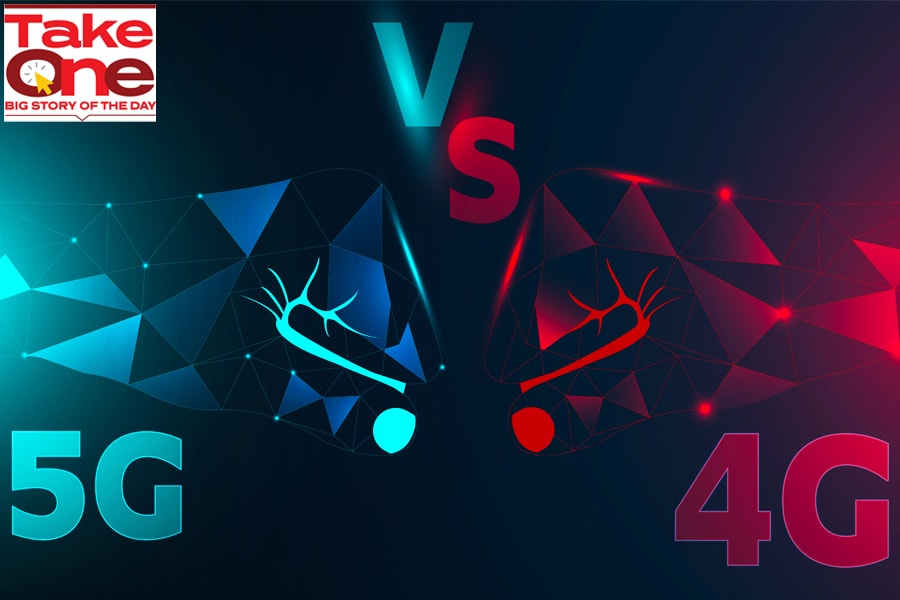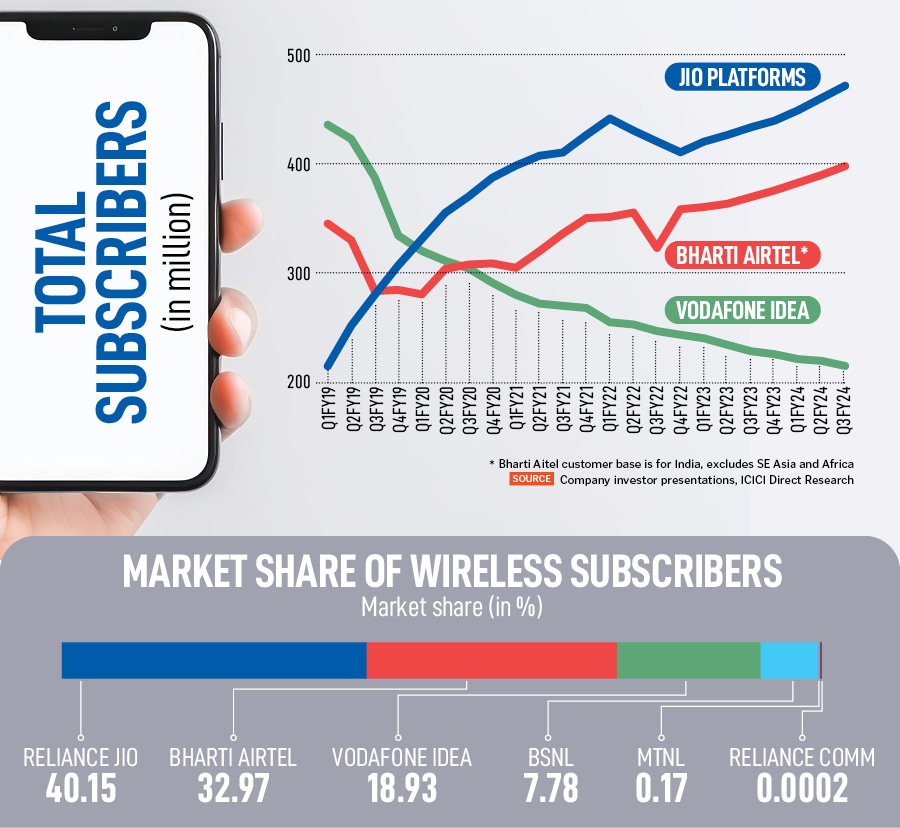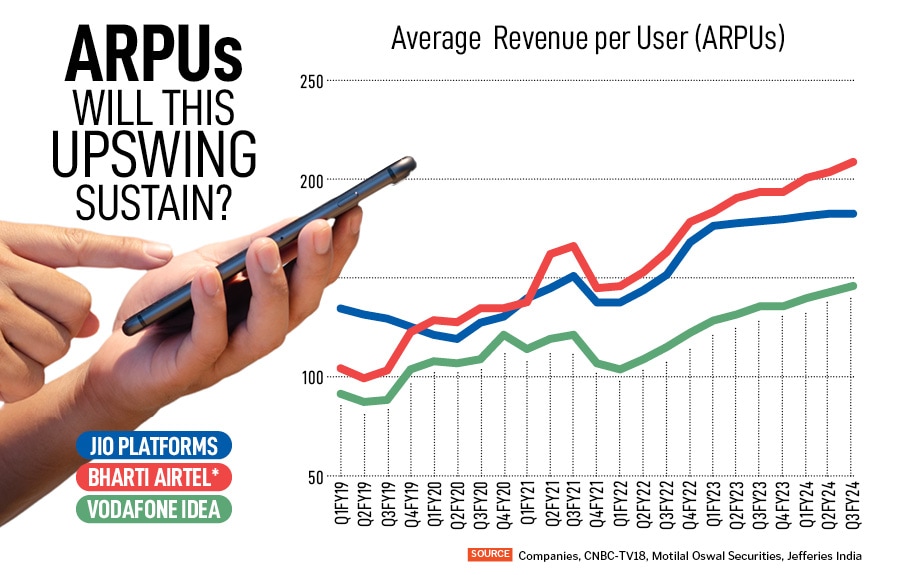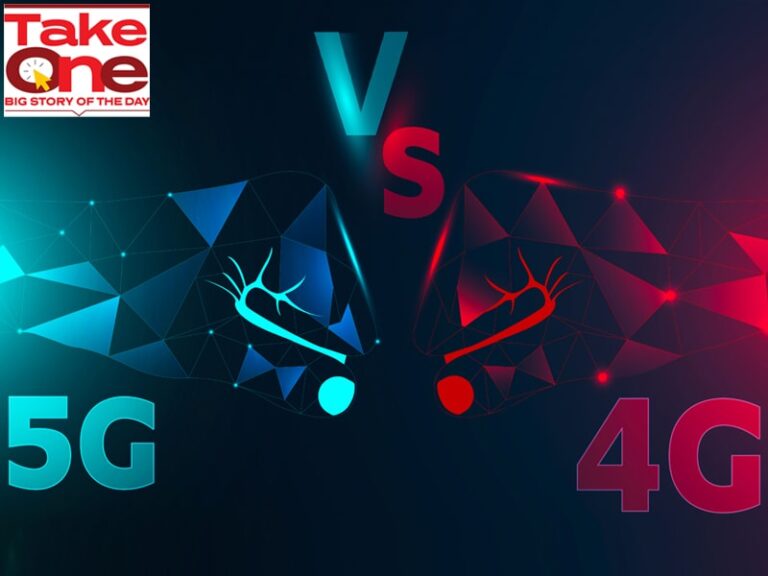 For customers, there is no clear difference between 4G and 5G technology, making the 5G story less appealing with each passing day, not just for telecom companies but also for individuals. Image: Shutterstock
For customers, there is no clear difference between 4G and 5G technology, making the 5G story less appealing with each passing day, not just for telecom companies but also for individuals. Image: Shutterstock
BAt the end of November 2022, a month after 5G services were launched in India, Shrenik Kanodia (not his real name), a day trader from Ahmedabad, recharged and opted for a “true” 5G network plan on his Reliance Jio plan for his iPhone 12. This was included for free for 336 days in his Rs 2,545 package, offering unlimited 5G with 1.5GB of 4G per day. “The best thing about the 5G service is that data doesn’t get used up while using the phone or streaming,” Kanodia said. Forbes India.
The most compelling factors of 5G for consumers have always been its low latency and high speeds. But Kanodia feels there isn’t much difference between 4G and 5G when it comes to video buffering. “Both the networks are equally fast.”
Although Kanodia mostly works outside the home, he doesn’t actively check whether his phone is connected to a 4G or 5G network. “Even when I’m not on Wi-Fi, the network often switches from 5G to 4G while I continue to work at my desk, but it’s not making a difference in my life,” he adds.
5G: Still no differentiator
For customers like Kanodia, the fact that there is no clear difference between 4G and 5G technology is making the 5G story less appealing by the day, not just for telecom companies but also for individuals. “The fact that 5G is free makes things easier. If I have to pay for it, I won’t use it. The problem is that 5G drains my mobile battery. Even when I’m connected to a 5G network, I put my phone on data saver mode and it reverts to 4G service, but my life carries on as normal,” says Kanodia.
Consumer subscriber data by the end of 2023 shows that Reliance Jio’s 5G users have grown to 70 million (out of approximately 460 million total wireless subscribers) and Bharti Airtel’s 5G users have grown to 55 million (out of 345 million total subscribers). Assuming a 30% growth in 5G customers in Q1 2024, this would translate to approximately 175 million pure 5G subscribers out of a total subscriber base of 1,164 million, representing a market share of approximately 15%.
Cash-strapped and debt-ridden Vodafone Idea (VI) has yet to deploy 5G technology, and Adani Data Networks, the Adani Group unit that acquired frequencies for its own dedicated networks at ports and logistics projects, has yet to build out its 26GHz 5G network.
But to understand the lackluster demand and adoption of 5G, we need to take a step back and consider why 4G was successful.
3G technology was a little successful in India because it didn’t serve any purpose and ended up only functioning as a voice tool. Experts called it an “inadequate, half-measure” and it fell into disuse. However, 4G LTE allowed for faster downloads of data, making the transition from voice to data very quick. Since then, 4G LTE has become the most widely used technology in Asia, the Middle East, and Africa.
But the hype around 5G technology has grown faster than its use. While it’s clear that the technology can be useful, there are few use cases to test 5G’s capabilities. “5G features such as low latency are relevant for industries (retail, manufacturing, robotics, etc.). Faster speeds won’t be a game changer for consumers. 5G will have a bigger role to play as the Internet of Things (IoT) is deployed more widely,” says Mahesh Uppal, director at ComFirst India, a consulting firm that specializes in policy and regulatory issues on telecom and internet.
As Indian telecom operators continue to shift focus from B2C to B2B in recent months, hopes are high for the growth of Indian enterprises, which will require private 5G networks. The inadequacies of fixed-line infrastructure have been evident over the past two decades. 5G will mean accelerated automation processes and the creation of new products and revenue streams.
“Around the world, 5G was pushed by regulators, governments and infrastructure providers, forcing telecom companies to roll out 5G networks early, but this is now becoming the norm,” said a former telecom CEO, speaking on condition of anonymity.
“Two years ago at Mobile World Congress, 5G was the hero. This time around, AI (artificial intelligence) was the buzzword. The biggest concern with 5G technology – amortisation – needs to be resolved. The legacy it will leave is that established polycentric models are looking at transforming into duopolies,” said the communications consultant.
Also read: After 5G comes e-SIM
Debottlenecking and monetizing your network
So has the expansion of 5G been poorly planned? Telecom companies say not. “5G has helped both Jio and Airtel remove bottlenecks in their 4G networks. Telecom companies are also benefiting from zero spectrum usage fees on the spectrum they won in the August 2022 auction,” says Balaji Subramanian, vice president at IIFL Securities, who tracks the telecom sector.
Balaji said this has reduced spectrum usage by 200 bps, improving EBITDA for both Jio and Airtel. For Airtel, this translates into savings of Rs 152 billion, which is significant, as its mobile revenue for FY23 was Rs 75,925 crore.
Airtel has previously said that about 10 to 15 percent of 4G traffic is being handled by its 5G network, so the telco is switching to 5G where it has capacity issues and 4G where it has coverage issues. “Remember, 30 percent of sites are responsible for 70 percent of the traffic,” says a telecom consultant.

The Telecom Regulatory Authority of India (TRAI) is planning new 5G guidelines for displaying network coverage maps on its website to ensure network coverage transparency regarding availability of 4G and 5G technologies.
Even as these issues are being ironed out, the biggest concern for Jio and Airtel is monetizing 5G technology. Airtel MD and CEO Gopal Vittal said during a Q3FY24 earnings call with analysts on February 6 that monetization will be “modest” given the capex for 5G, but the expansion of fixed wireless access (Airtel Xstream AirFiber) and private 5G network (Airtel business) will provide some boost to monetization potential.
Experts spoken to by Forbes India and media reports strongly suggest that telecom tariffs will increase by 15-20% after the general elections, likely between July and September. The last price hike was implemented in December 2021. Further price hikes over the next 18 months will boost revenues. Average revenue per user (ARPU) has been increasing in recent months despite the absence of price hikes (see chart). This is primarily due to the premiumisation model, with customers upgrading to higher value plans.
With most of the spectrum for 5G expansion already bought, experts expect a lukewarm response to the spectrum auction scheduled for June.
IIFL’s Balaji says Airtel is likely to bid for the 900MHz band in new circles and selectively buy 4G spectrum to make additional purchases. Reliance Jio has most of the spectrum it needs and has adjusted for 5G rollout. “We expect the auction to be a middling one. Most operators have already bought enough and are expected to replenish their stocks as and when required. They can afford to wait a bit longer,” Uppal said. Forbes India.
Vodafone Idea, India’s third-largest telecom company, is in the process of recapitalization. The company’s board has already approved raising Rs 2,075 crore from the Aditya Birla Group, taking its authorized capital to Rs 1,000 crore. The company is also finalizing plans for a Rs 20,000 crore follow-on public offering (FPO), possibly by next week.

VI has a tough road ahead, having lost both wireless subscribers and market share to Jio and Airtel in recent years (see chart). IIFL’s Balaji says VI then plans to raise another Rs 25,000 crore from lenders, bringing its total funding (debt + equity) to Rs 50,000 crore to Rs 55,000 crore, which will be used for capex to improve 4G coverage.
Also read: On average, Indians consume 24.1GB of mobile data every month
Assuming a tariff hike after the general elections and another in two to three years, VI expects its ARPU to rise significantly from the current Rs 145. “A lot of these factors need to work for VI to survive as the third largest telco,” Balaji says. Uppal says VI has a fairly competitive existing 4G network. “VI’s challenge is the amount of debt it has to the government and it doesn’t have enough assets to repay the government. So if it goes under, everyone loses except its competitors,” Uppal says.
Sunil David, a former AT&T regional director who now co-chairs the IET Future Tech Panel’s Digital Communications Working Group, says 5G growth is on par with 4G. It could be better, but “the cost of 5G devices was high in the first half of 2023,” falling to under $20,000 in the second half. “We’re still using the same apps, the social media platforms… the introduction of the killer app hasn’t happened yet,” David says. Forbes India Edition.
New price increases are likely in 2024, and carriers will look to growth in fixed wireless access lines and private 5G captive networks even more. But more meaningful monetization of 5G needs to happen before carriers can rest easy.


